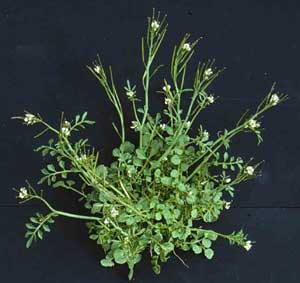
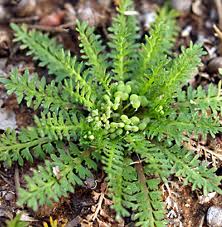
Swinecress is an easy to identify winter mustards.
It’s our mustard time of year. Harvested this week were half a dozen related species: hairy bitter cress, wild mustard, wild radish, pepper grass and swine cress. Hairy bittercress (above) is the mildest and smallest of the lineup, swinecress (right) s the strongest (in fact its taste grows stronger the more you chew it.) These mustards can be pickled and or dried for later use. Not surprisingly different mustards like different environments. Swinecress likes lawns as it is a low- growing rosette, Hairy bittercress like rich damp soil including shady creek banks, Pepper grass like sunny dry areas, as do wild mustard and wild radish (as they are taller they can grow in higher grass. Another mustard family member also seen this time of year, but not last weekend, is Western Tansy Mustard, it’s very mild and like very dry arreas (think dusty horse corrals and the like.)
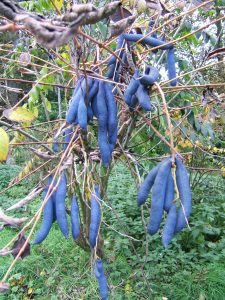
Dead Man’s Fingers
Botany Builder #8: The endings of botanical names in Dead Latin can often give us a clue about the species especially -ifera (producing) and -oides (resmebles) [and variations such as -iferum.] Often the botanical name is virtually no help in identifying a plant, such as when the genus and the species honor two different people. A good example is Decaisnea fargesii, (left) Dead Man’s Fingers. It’s named after Joseph Decaisne and Pere Farges. No description there.. seems like a lost opportunity to me… Sometimes the species name is misleading as in Pinus palustris, which means a pine that likes to grow in swamps. Unfortunately Pinus palustris only grows on the top of dry sandy hills. That the descriptive name is very wrong is not enough to get it changed. The reason has to be botanical even if flimsy botanical.
-ifera and -oides however usually are helpful. -ifera again means “producing” or bearaing.” Papyrifera means paper bearing, as in Betula papyrifera, the Paper Birch, right. Bulbifera means bulb bearing, such as the Dioscorea bulbifera, the Air Potato. Cerifera means wax bearing like the Southern wax Myrtle, Myrica cerifera . The Myrica cerifera produces a green wax that was traditionally used to make Bayberry Candles.
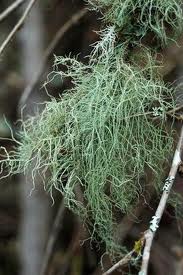 -oides again means “resembling” or ‘looks like.” Tillandsia usneoides (Spanish Moss) means looks like the lichen usnea. ranunculoides means looks like ranunculus (butter cups.) Centruroides means … like sharp (and is a genus of scorpions are in reference to their stingers.) While the word “folia” can mean leaves it is also used to mean look like. Aquifolium means holly-like leaves. Tiliifolia means basswood-like leaves. Sonchifolia means leaves like a sow thistle. So if you have an -ifera in front of you it should be producing something. If you have an oides it should look like something else you probably already know.
-oides again means “resembling” or ‘looks like.” Tillandsia usneoides (Spanish Moss) means looks like the lichen usnea. ranunculoides means looks like ranunculus (butter cups.) Centruroides means … like sharp (and is a genus of scorpions are in reference to their stingers.) While the word “folia” can mean leaves it is also used to mean look like. Aquifolium means holly-like leaves. Tiliifolia means basswood-like leaves. Sonchifolia means leaves like a sow thistle. So if you have an -ifera in front of you it should be producing something. If you have an oides it should look like something else you probably already know.
Foraging classes: With most of the rainy season over all we have to contend with now is cool weather.

Foraging classes are held rain or shine, heat or cold. Photo by Nermina Krenata
Saturday December 3rd Mead Garden: 1500 S. Denning Dr., Winter Park, FL 32789. Meet at the bathrooms. 9 a.m.
Sunday December 4th Bayshore Live Oak Park, Bayshore Drive. Port Charlotte. 9 a.m. Meet at bayshore and Ganyard Street.
Saturday December 10th Blanchard Park, 10501 Jay Blanchard Trail, Orlando, FL 32817. 9 a.m. meet by the tennis courts.
Sunday December 11th Spruce Creek Park, 6250 Ridgewood Ave. Port Orange, 32127. 9 a.m. Meet at the pavilion.
For more information about the classes, to pre-pay, or to sign up go here. For all communication with me use GreenDeane@gmail.com
FRIDAY December 23rd: 12th Urban Crawl it is time to mark your calendar for my 12th annual Urban Crawl. It will be Friday December 23rd at 10 a.m. in Winter Park, Florida. We meet in front of Panera’s on Park Avenue. It’s difficult to believe I’ve had that walk for twelve years now. The Urban Crawl is free to all, and is wheel chair friendly.
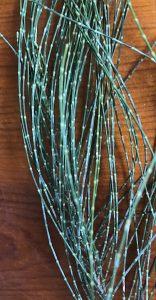
The Australian Pine has branchlets not needles. Photo by Green Deane
The Australian Pine is not a pine and is more closely related to the oaks. In fact it is often called the “she oak.” It’s a prime source of firewood (and can be burned immediately after cutting.) It is also used for smoking meat and fish as are the “needles” after soaking them in salt water. And those whispy rhapidophyllum are not needles. They are branchlets. (Rhapidophyllum, from the Greek, is the botanical name for needle-leaf whereas in the animal world the same shape is hystrix also from the Greek ὕστριξ meaning porcupine.) And as one might guess the Needle Palm is Rhapidophyllum hystrix, a bit of drunk botanist overkill. It’s a cold-hardly palm that hurts like hell and will grow as far north as Long Island and Seattle.
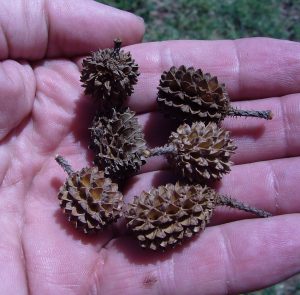
Cones from the Australian Pine minus seeds. Photo by Green Deane
In Florida Australian Pines are seen as far north as Haul Over Canal, just north of the space center where they hold the dirt banks of the canal in place. And they are also in the center of the state in Deland, home of Stetson College. The species barely fits into the edible realm. It’s sap is drinkable, the branchlets are edible as are the cones but better are the roasted seed. You can watch my video it here.
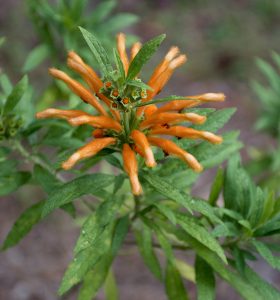
A young Leonotis leonurus blossom. Photo by Green Deane
There’s an innocent-looking ornamental plant in local parks which in some European countries the possession of which can get you 30 years in prison: Wild Dagga, or, Leonotis leonurus. As a student of Greek I always have an issue with the name because “Leonotis” means “Lion’s Ear” while “leonurus” is mangled Greek and “new” Latin for “Lion’s Tail.” So it’s name is Lion’s Ear Lion’s Tail…. more drunk botanistl overkill. They took it all from the historical King of Sparta, λέωνῐ́δᾱς, or Leonida, which means “son of a lion.” A second species found locally — and more often — is Leonotis nepetifolia (catnip leaf.) The plants look similar except “lion tail” has skinny leaves like marijuana, and the “catnip leaf’ has somewhat large diamond-shaped leaves like catnip. The blossoms and over all growth pattern is similar for both. From tropical South Africa and India Lion’s Tail is used … recreationally… where as Catnip Leaf is used medicinally. Both have leonurine, Lion’s Tail apparently more than Catnip Leaf. Water extraction — tea — is the common method of use. A 2015 study says Leonotis leonurus seems to be mildly pschoactive. “Research has proven the psychoactive effects of the crude extract of L. leonurus, but confirmation of the presence of psychoactive compounds, as well as isolation and characterization, is still required.” Sounds like a pitch for more research money. Others report both species contain marrubiin which is an analgesic and probably why they have been used in traditional medicine. Bees and humming birds also like the species. A relevant article can be read at: https://pubmed.ncbi.nlm.nih.gov/29016795/

You get the USB, not the key.
Changing foraging videos: As my WordPress pages are being updated the video set will go away. They are the same videos I have on You Tube. Some people like to have a separate copy. The DVD format, however, is becoming outdated. Those 135 videos plus 36 more are now available on a USB drive. While the videos were played from the DVDs the videos on the USB have to be copied to your computer to play. They are MP4 files. The 171-video USB is $99. If you make a $99 “donation” using the link at the bottom of this page or here, that order form provides me with your address, the amount — $99 — tells me it is not a donation and is for the USB.
This is weekly newsletter #533. If you want to subscribe to this free newsletter you can find the sign-up form in the menu at the top of the page.
To donate to the Green Deane Newsletter click here.

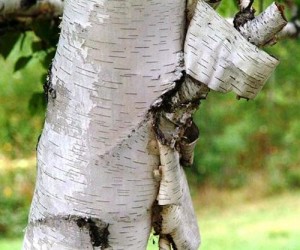

Dear Green Dean- I don’t know if I ever thanked you for doing this and continuing to do this year after year. I have too many illnesses to participate now, but I very much enjoyed the one walk we were able to make with you, I think it was Dreher Park. We learned so much from you.! Thank you again for doing this year after year.